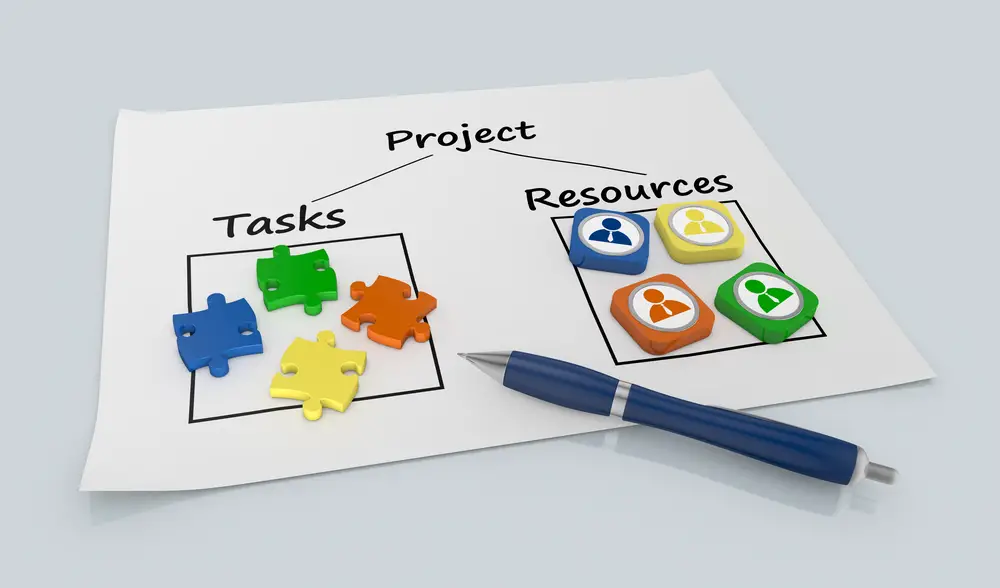A change manager is a professional who is responsible for leading, planning, and executing change within an organization. Change management is a process that helps organizations transition from their current state to a desired future state. Change managers play a vital role in helping organizations realize these goals through the use of change management strategies.
Change managers typically have four primary responsibilities: leading change, developing plans, executing plans, and monitoring progress.
Leading Change
Change managers must be able to lead both people and projects. This includes providing direction, motivating teams, and dealing with resistance to change. Change managers need to be able to build relationships and influence others. They also need to be excellent communicators in business administration.
Developing Plans
A large part of a change manager’s job is developing plans for how the organization will transition from its current state to its desired future state. This includes identifying what needs to change, identifying who will be impacted by the changes, and outlining the steps that need to be taken to make the changes.
Executing Plans
Once the plans are developed, it’s time to execute them. This includes putting the plans into action and ensuring that they are carried out as intended. Change managers need to be able to track progress and make adjustments as needed. They also need to communicate regularly with stakeholders about the progress of the project.
Monitoring Progress
As changes are being made, it’s important to monitor progress and identify any areas where additional changes may be needed. Change managers also need to assess whether or not the changes are having the desired effect on the organization as a whole.
Are you interested in becoming a change manager? If so, then you’ll need to possess many of the skills and qualities we’ve discussed in this article. If you have what it takes, then a career in change management could be perfect for you!
In any organization, change is inevitable. As the saying goes, “the only constant changes.” And while change can be difficult, it can also be an opportunity for growth. That’s where change managers come in.
Change managers are responsible for leading an organization through a period of change—whether that means implementing a new system or process, relocating to a new office, or anything in between. But what exactly does a change manager do? Let’s take a look at the roles and responsibilities of a change manager to find out.
Difference Between Change Managers and Project Managers
Change management emphasizes the impact of change. The aim of the program is to minimize the negative impact and maximize the positive effect of organizational change. These usually involve the people side – the impact that change has on people, and how people can adapt to change and deal with any resistance. Project managers are also focused more on actual delivery.
Change managers are responsible for overseeing and coordinating the implementation of changes to an organization, while project managers are responsible for overseeing and coordinating the implementation of specific projects. Change managers typically have a wider scope of responsibility than project managers, as they are responsible for all changes and organizational development.
Project managers, on the other hand, are typically only responsible for overseeing the implementation of specific projects. Change managers also typically have more authority than project managers, as they are responsible for coordinating the efforts of multiple departments and individuals. Project managers typically only have authority over the project team members.
Change management is a more strategic function than project management, as it is focused on ensuring that changes are made in a way that is aligned with the organization’s goals and objectives. Project management is more tactical in nature, as it is focused on ensuring that specific projects are completed on time and within budget.

Who reports to change managers?
Change managers are often reporting to various people depending on what type of organization they are working in, and the project they are working on. In some firms, change managers report directly to the CEO, especially when organizational changes have a significant impact. They can formally report on a CTO/CIO to a senior IT consultant or human resources director.
Change Manager Roles and Responsibilities
Coordinating the Change Process
One of the primary responsibilities of a change manager is to coordinate the change process from start to finish. This involves developing a plan for how the change will be executed and then working with all relevant parties—including employees, leadership, IT, vendors, and so on—to see the plan through. Change managers also need to develop clear communication plans so that everyone involved in the change understands what is happening when it is happening, and how it will impact them.
One of the primary roles of change managers is to develop and implement plans for how the change will be executed. This includes everything from setting timelines and milestones to establishing communication protocols to assigning tasks and responsibilities. In short, change managers are responsible for making sure that all the necessary pieces are in place before the change is implemented.
Leading Change Teams
An effective change management team is essential for any successful change initiative. As such, another key responsibility of change managers is leading and managing these teams. Change managers are responsible for putting together teams of employees who have the skills and knowledge necessary to execute the planned changes. Additionally, they provide guidance and support to these teams throughout the duration of the project.
Gathering Data and Analyzing Impact
In order to create an effective plan for organizational change, data must be gathered and analyzed to understand the potential impact of the proposed changes. Change managers are responsible for identifying what data needs to be collected and then working with relevant teams to gather it. Once all of the necessary data has been collected, it falls on the shoulders of change managers to analyze it and identify any potential risks or challenges associated with implementing the proposed changes.
Managing resistance
No matter how well-planned or necessary an impending period of change may be, there will always be some level of resistance from employees. It’s human nature to resist change, even when we know it’s for the best. As such, another key responsibility of change managers is managing employee resistance. This involves identifying sources of resistance, developing strategies for mitigating it, and then communicating these strategies to all relevant parties.
Communicating with Stakeholders
Another important role of change managers is communicating with stakeholders—those individuals or groups who will be affected by the proposed changes. This includes keeping key stakeholders updated on the latest developments of change initiatives, addressing their concerns and questions, and assuaging any fears they may have about the impending change management practices. Clear and effective communication with stakeholders is essential to achieving buy-in and ensuring that the transition goes smoothly.
Monitoring Progress and Adjusting Plans Accordingly
Once the changes have been implemented, it’s important to monitor progress using a change management plan template to ensure that things are going according to plan. If not, it may be necessary to make adjustments to the business processes plan. This might involve anything from modifying timelines to changing communication protocols or reassigning tasks and responsibilities. The goal is always to ensure that the transition is proceeding as smoothly as possible so that business goals can be achieved in a timely manner.

Change Management job descriptions
Whenever organizations undergo a transformation they have someone responsible for guiding and co-coordinating it. There is a need for a new Change Manager. Change managers work to support companies in the process. Change managers are organizational change managers.
It also assists in planning, implementing, and monitoring change. Change managers manage organizational change activities. They collaborate on changes at any level with the leadership team. Change managers need to manage changes that are sometimes complicated and difficult. This is captured in the change management job description.
Prosci clients have gathered valuable insights on the roles and responsibilities of Change Management as well as the qualifications and abilities which prepare them to make their own successful careers.
While job titles and roles in changing management vary largely according to the specific organization and their needs around change, this job description for change managers offers a comprehensive overview of a generalized role and they need to have acute business acumen.
What skills do change managers need?
As change management gets more complex and inter-functional skills grow, change management skills need to increase. It includes both technical and soft abilities.
Change managers need to be able to see the big picture and understand how different pieces of a project fit together. They also need to be able to develop creative solutions to problems and effectively communicate with team members.
In addition, change managers need to have strong project management skills and be able to stay organized under pressure. Finally, they need to be able to build consensus among team members and stakeholders. They need to adhere to change management principles and the change management process. Change management tools can measure success metrics.
How much does a change manager earn?
Change managers earn AUD900-240 per year in permanent positions or AUD450-1600 per day in contracting roles.
Sydney
Change Management Permanent (AUD/1000) Contracts (AUD/day) Director of Change 180-260 1200- 600 Change Leader 175-170 1200 – 300 Senior Change Manager 145 – 156 1300 Senior Change Manager 900- 1100 Change Manager 170 – 1200
Melbourne
Change Management Permanent Contracts (AUD/day) Change managers 120 to 160 700 – 1000 change analysts 200 to 150 600 750.

Conclusion
All in all, leading an organization through a period of change is no small feat—but it is possible with the help of an experienced change management team. By understanding the roles and responsibilities of change managers, you can ensure that your next period of organizational change goes as smoothly as possible.
Change managers play a vital role in any organization undergoing change. They are responsible for developing and implementing plans for how the change will be executed, communicating with stakeholders, and monitoring progress to ensure that things are going according to plan. If you’re an organization considering making changes, be sure to give this critical role the attention it deserves.

Chris Ekai is a Risk Management expert with over 10 years of experience in the field. He has a Master’s(MSc) degree in Risk Management from University of Portsmouth and is a CPA and Finance professional. He currently works as a Content Manager at Risk Publishing, writing about Enterprise Risk Management, Business Continuity Management and Project Management.

